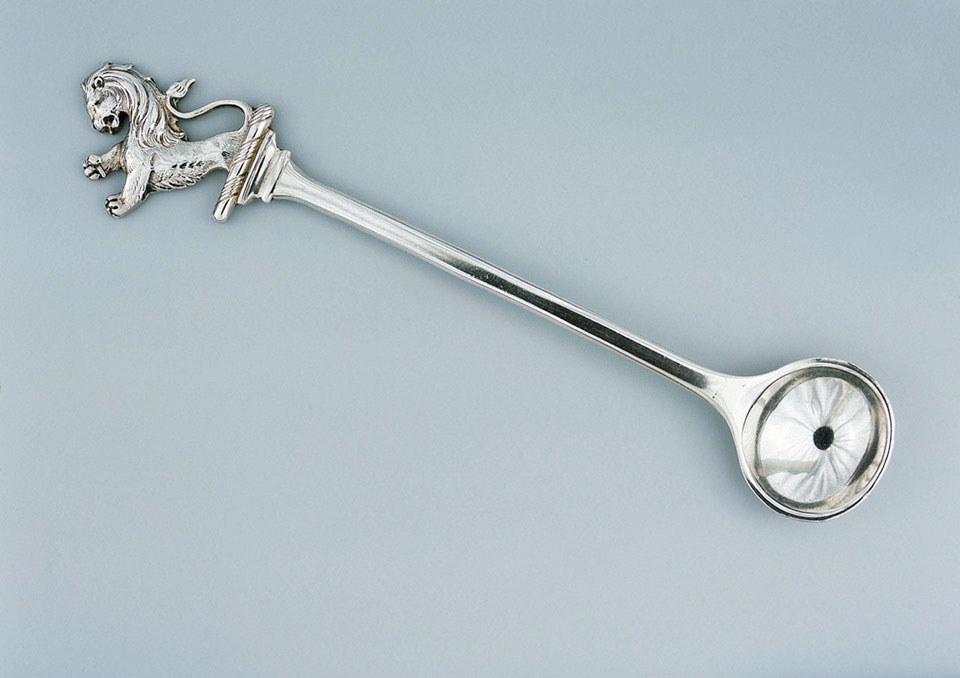
Online Collection
Silver spoon, 94th Russell's Infantry, 1904
Silver, hallmarked London, 1904-1905. Stem surmounted by a lion rampant.
95th Russell's Infantry traced its lineage to being first raised in 1813 by Sir Henry Russell as the 2nd Battalion, Russell's Brigade. In 1826 it was renamed 2nd Regiment of Infantry, Nizam's Army, and in 1854 as the 2nd Infantry, Hyderabad Contingent. The regiment was renamed as the 95th Russell's Infantry as part of Lord Kitchener's major reforms of the Indian Army in 1903.
In 1914 the regiment comprised of 3 companies of Rajputs, 3 companies of Hindustani Muslims, and 1 company of Punjabi Ahirs, and was stationed in Bombay. The regiment stayed in India for the first three years of World War One (1914-1918), transferring to Mesopotamia in the Autumn of 1917. It remained in a quiet area on defence of the Euphrates River. In December 1918 they transferred to Salonika and from there to Turkey where they participated in the post-war occupation.
In January 1918 a 2nd Battalion, 95th Russell's Infantry was raised and was attached to the 2nd Indian Infantry Brigade, Waziristan Force for service on the North West Frontier before being disbanded in February 1921.
After the First World War, the Indian Army shifted from single battalion infantry regiments to multi-battalion regiments, and in 1922 the 95th Russell's Infantry became the 10th (Training) Battalion, 19th Hyderabad Regiment.
NAM Accession Number
NAM. 2002-07-2-1
Copyright/Ownership
National Army Museum Copyright
Location
National Army Museum, Study collection
Object URL
https://collection.nam.ac.uk/detail.php?acc=2002-07-2-1

